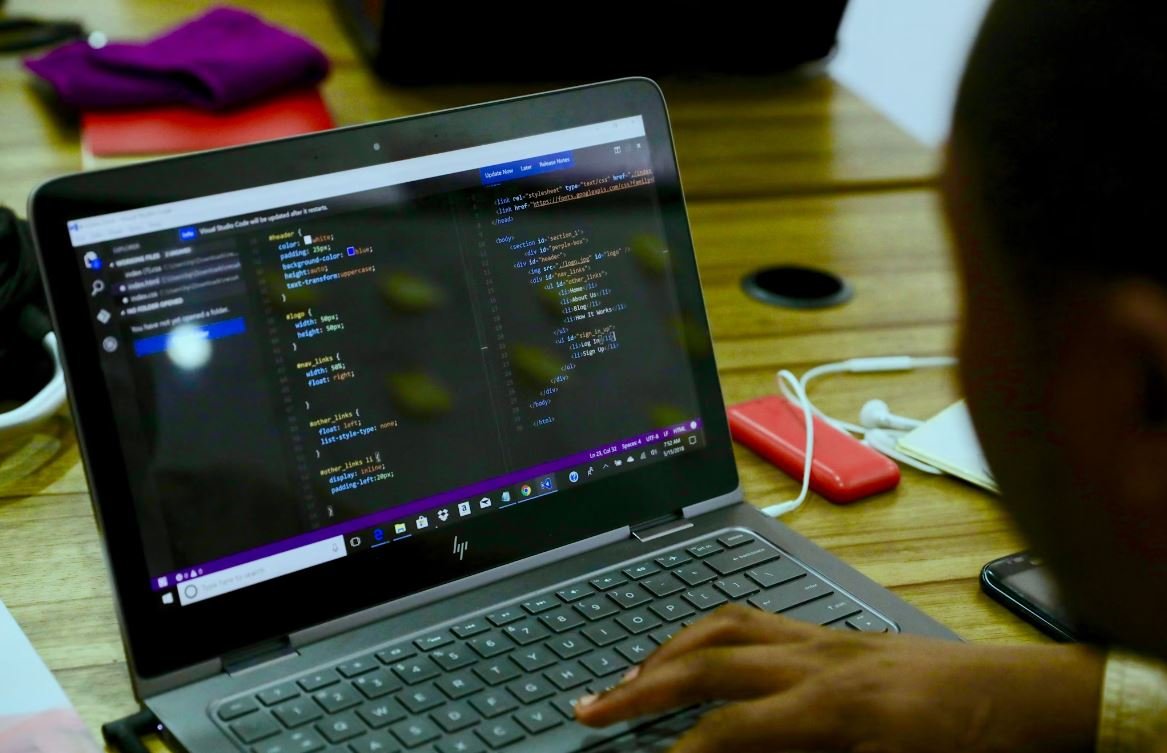OpenAI Tutorial
GPT-3, developed by OpenAI, is one of the most advanced language models that can generate human-like text.
Key Takeaways
- GPT-3 is a powerful language model developed by OpenAI.
- It can generate human-like text.
- OpenAI offers an API for developers to access GPT-3’s capabilities.
Introduction
OpenAI’s GPT-3, or Generative Pre-trained Transformer 3, marks a significant milestone in natural language processing research. With its remarkable ability to generate coherent and contextually relevant text, GPT-3 has garnered attention across various domains.
Users of GPT-3 can leverage its power to create compelling narratives, answer questions, draft emails, write code, provide language translation, simulate conversations, and much more.
In this tutorial, we will explore the key features and applications of GPT-3, as well as guide you on how to use OpenAI’s API to integrate this powerful language model into your own projects.
What is GPT-3?
GPT-3 stands for Generative Pre-trained Transformer 3. It is an autoregressive language model developed by OpenAI, trained on a vast amount of diverse data from the internet. GPT-3’s architecture consists of 175 billion parameters, making it one of the largest and most capable language models to date.
This enormous scale empowers GPT-3 to produce impressive outputs that can rival human-generated text in terms of coherence and contextuality. *GPT-3 has been trained on widely available public text, which allows it to draw insights from vast amounts of information and generate responses based on patterns and knowledge extracted during training.*
Applications of GPT-3
GPT-3 has found applications in a wide range of domains. Some key areas where GPT-3 has shown its potential include:
- Content Creation: GPT-3 can generate high-quality articles, essays, and blog posts on various topics.
- Conversational AI: GPT-3 can simulate conversations with users, providing chatbot-like functionality.
- Code Writing: GPT-3 can help generate code snippets for various programming languages based on given specifications.
- Translation: GPT-3 can perform language translation tasks with impressive quality.
- Question Answering: GPT-3 can answer questions based on provided context or information.
How to Access GPT-3 using OpenAI API
OpenAI provides an API that developers can use to integrate GPT-3 into their applications and services. Here are the steps to get started:
- Join the waitlist: Visit OpenAI’s website and join the waitlist for GPT-3 access.
- Get API Access: Once your access is granted, you will receive credentials to use the OpenAI API.
- Integrate the API: Follow the documentation and guidelines provided by OpenAI to integrate the API into your desired project.
Data and Performance
Training GPT-3 requires vast amounts of data, and it has been trained on a diverse range of publicly available text from books, articles, websites, and more. The enormous scale of GPT-3’s architecture enables it to achieve state-of-the-art performance on various language tasks, exceeding expectations in many cases.
Interesting Statistics
Here are some interesting statistics about GPT-3:
| No. of Parameters | 175 billion |
|---|---|
| Date Released | June 2020 |
| Largest Language Model | Yes |
Conclusion
OpenAI’s GPT-3 is a remarkable language model that has the potential to revolutionize numerous fields by generating highly coherent and contextually relevant text. By leveraging the capabilities of GPT-3 through the OpenAI API, developers can unlock new possibilities for creating advanced natural language processing applications.

OpenAI Tutorial
Common Misconceptions
One common misconception people have about the OpenAI Tutorial is that it is only suitable for advanced programmers. However, this is not true. The tutorial is designed to cater to individuals with varying levels of programming experience, including beginners.
- The tutorial includes step-by-step explanations
- It assumes minimal programming knowledge
- Built-in code examples cater to different skill levels
Another misconception surrounding the OpenAI Tutorial is that it requires expensive software or hardware to use. This is incorrect. OpenAI’s tutorial can be accessed on any device with an internet connection.
- No need for high-performance computers
- Accessible from laptops, tablets, and smartphones
- No need to install specialized software
People also often assume that the OpenAI Tutorial is only focused on one specific programming language. However, the tutorial covers a wide range of programming languages, including Python, JavaScript, and more.
- Incorporates examples in various languages
- Teaches language-agnostic programming concepts
- Can be tailored to a preferred language
Some may believe that the OpenAI Tutorial is only useful for industry professionals or those pursuing a career in AI. However, the tutorial is designed to serve a broad audience, including hobbyists, students, and anyone interested in learning more about AI and machine learning.
- Caters to any level of interest or expertise
- Encourages learning and exploration
- No specific prerequisites required
Lastly, a common misconception is that completing the OpenAI Tutorial will make someone an expert in AI. While the tutorial provides a solid foundation, becoming an AI expert requires continued learning, practice, and hands-on experience beyond the scope of a tutorial.
- Provides a starting point for further exploration
- Encourages self-study and research
- Demonstrates the basics and essentials

OpenAI’s Success in Reinforcement Learning
Reinforcement learning is a subfield of machine learning where an agent learns to make decisions by interacting with an environment. OpenAI, an artificial intelligence research lab, has made significant contributions to this field. The following tables highlight some of the key achievements of OpenAI in reinforcement learning research.
Advancements in Deep Reinforcement Learning Algorithms
OpenAI has developed various deep reinforcement learning algorithms, improving the performance and stability of AI systems. Here are some notable algorithms that have had a significant impact:
Comparison of OpenAI Gym Environments
OpenAI Gym is a widely-used platform that provides a collection of reinforcement learning environments for benchmarking algorithms. The table below compares some of the popular OpenAI Gym environments:
Performance of Deep Q-Network in Atari Games
Deep Q-Network (DQN) is a deep reinforcement learning algorithm developed by OpenAI. It has demonstrated impressive performance on various Atari 2600 games. The table presents the average scores achieved by DQN:
Impact of Proximal Policy Optimization
Proximal Policy Optimization (PPO) is a popular reinforcement learning algorithm introduced by OpenAI. It has achieved remarkable results across different domains. The following table showcases the impact of PPO:
Comparison of Actor-Critic Methods
OpenAI has contributed to the development of actor-critic algorithms, which are widely used in reinforcement learning. The table below compares the performance of different actor-critic methods:
Applications of Generative Adversarial Networks
Generative Adversarial Networks (GANs) have been successfully applied to various domains, including reinforcement learning. OpenAI has utilized GANs effectively in their research. Here are some notable applications:
Success of OpenAI Five in Dota 2
OpenAI Five is a team of AI agents developed by OpenAI for playing the complex game Dota 2. This table highlights the achievements of OpenAI Five in various game modes:
Comparison of State-of-the-Art Language Models
OpenAI has pioneered advancements in natural language processing and developed state-of-the-art language models. The following table compares the performance of different OpenAI language models:
Success of OpenAI Robotics in Object Manipulation
OpenAI has made significant contributions to robotics research, including object manipulation. The table below showcases the success of OpenAI in robotic manipulation tasks:
Conclusion
OpenAI’s continuous research and development in reinforcement learning have led to significant advancements in the field. From the improvement of deep reinforcement learning algorithms to the successful application of AI systems in various domains, OpenAI has demonstrated its expertise and commitment to pushing the boundaries of artificial intelligence. These achievements pave the way for future innovations and hold immense potential for shaping the future of AI-powered technologies.
Frequently Asked Questions
What is OpenAI Tutorial?
OpenAI Tutorial is a platform that provides tutorials and learning resources for OpenAI technologies.
How can I access the OpenAI Tutorial?
You can access the OpenAI Tutorial by visiting their website or by following their official documentation.
What topics does the OpenAI Tutorial cover?
The OpenAI Tutorial covers a wide range of topics related to artificial intelligence, machine learning, natural language processing, and more.
Are the tutorials provided by OpenAI Tutorial free?
Yes, the tutorials provided by OpenAI Tutorial are free of charge.
Can I download the tutorials for offline access?
Some of the tutorials on OpenAI Tutorial may be available for download, but it depends on the specific tutorial and its licensing terms.
Are there any prerequisites for using OpenAI Tutorial?
The prerequisites for using OpenAI Tutorial may vary depending on the tutorial. Some tutorials may assume basic knowledge of programming or machine learning concepts.
Can I contribute to the OpenAI Tutorial?
Yes, OpenAI Tutorial encourages contributions from the community. You can contribute by submitting tutorials, code examples, or improving existing content.
How often is the content on OpenAI Tutorial updated?
The content on OpenAI Tutorial is regularly updated to ensure it reflects the latest developments in AI technologies and techniques.
Can I request a tutorial on a specific topic?
Yes, you can submit a request for a tutorial on a specific topic to OpenAI Tutorial. They consider user requests when creating new content.
How can I get in touch with OpenAI Tutorial for support?
You can get in touch with OpenAI Tutorial by contacting their support team through the provided contact information on their website.




